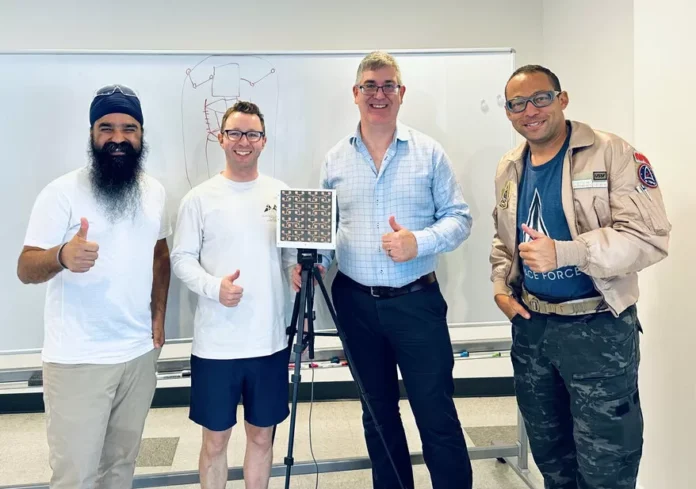In a major step towards the future of renewable energy, Silicon Valley startup Orbital Composites and Michigan-based Virtus Solis have announced their plans to conduct a space-based solar power demonstration in 2027. This groundbreaking project has the potential to revolutionize the way we harness solar energy and provide a sustainable solution for our growing energy needs.
The partnership between Orbital Composites and Virtus Solis brings together two leading companies in the field of space technology and renewable energy. Orbital Composites, known for their innovative 3D printing technology, has been making waves in the aerospace industry with their cutting-edge approach to manufacturing. On the other hand, Virtus Solis has been at the forefront of developing advanced solar panels that are more efficient and durable than traditional ones.
The 2027 space-based solar power demonstration will involve launching a satellite equipped with Orbital Composites’ 3D printed solar panels into orbit. These panels, made from lightweight and durable materials, will be able to capture and convert solar energy into electricity with unprecedented efficiency. The satellite will then transmit this energy back to Earth, where it will be received by a ground station and distributed to the grid.
This demonstration is a significant milestone in the development of space-based solar power, which has long been considered a promising but challenging concept. The main advantage of space-based solar power is that it can provide a continuous and abundant supply of energy, unaffected by weather conditions or time of day. This makes it a highly reliable and efficient source of renewable energy, with the potential to meet the world’s growing energy demands.
The partnership between Orbital Composites and Virtus Solis is a testament to the power of collaboration and innovation. By combining their expertise and resources, these two companies are pushing the boundaries of what is possible and paving the way for a more sustainable future. This project also highlights the crucial role that private companies can play in driving technological advancements and addressing global challenges.
The announcement of the 2027 space-based solar power demonstration has been met with excitement and anticipation from the scientific community and the general public alike. Many experts believe that this project has the potential to be a game-changer in the field of renewable energy and could open up new possibilities for space exploration and colonization.
The benefits of space-based solar power go beyond just providing a clean and reliable source of energy. It also has the potential to reduce our dependence on fossil fuels and mitigate the harmful effects of climate change. With the world facing a climate crisis, the need for sustainable solutions has never been more urgent. The 2027 demonstration by Orbital Composites and Virtus Solis could be a significant step towards a greener and more sustainable future.
The success of this project could also have a significant impact on the economy. The development of space-based solar power technology has the potential to create new jobs and stimulate economic growth. It could also open up opportunities for other companies to enter the market and contribute to the advancement of this technology.
In conclusion, the announcement of the 2027 space-based solar power demonstration by Orbital Composites and Virtus Solis is a significant development in the field of renewable energy. This project has the potential to revolutionize the way we harness solar energy and provide a sustainable solution for our energy needs. It is a testament to the power of collaboration, innovation, and the endless possibilities of space technology. The future looks bright, and we can’t wait to see what this partnership will achieve in the years to come.
The post Orbital Composites and Virtus Solis announce space-based solar power demonstration appeared first on SpaceNews.

